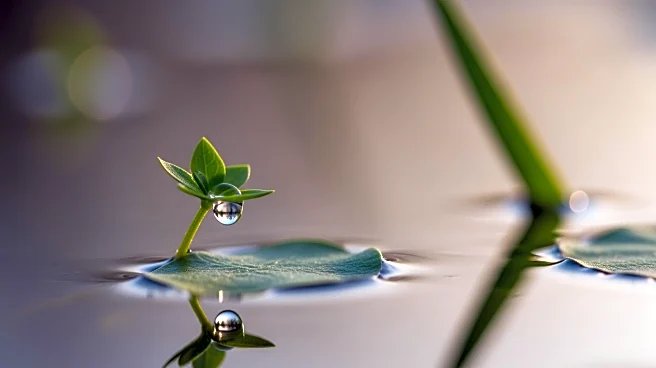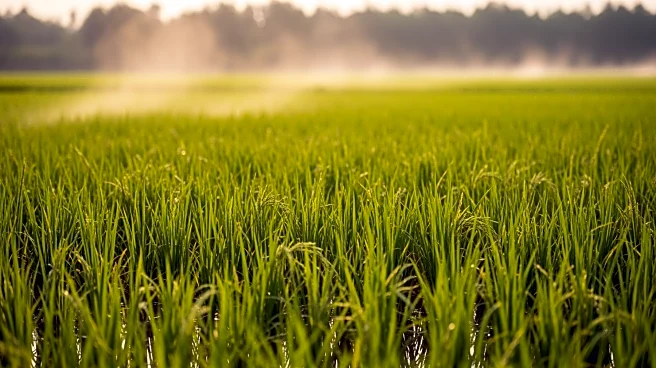What's Happening?
A recent study has investigated the use of essential oils from the Lamiaceae family as a sustainable method to control biodeteriogenic black fungi on cultural heritage stones. Historical buildings, which serve as important cultural assets, are often subject
to degradation due to various factors, including biological agents like fungi. These microorganisms can cause significant damage to stone materials such as marble, limestone, and sandstone. The study focused on the antifungal efficacy of essential oils from plants like O. majorana, O. minutiflorum, and M. longifolia subsp. typhoides against fungi from the genus Capnobotryella, which are known to deteriorate historical monuments. The research was conducted under controlled conditions, assessing the oils' effectiveness at different concentrations. The findings suggest that these natural compounds could offer a viable alternative to synthetic biocides, providing a safer and environmentally friendly approach to preserving cultural heritage.
Why It's Important?
The preservation of historical monuments is crucial for maintaining cultural heritage and legacy. Traditional methods of conservation often involve chemical treatments that can have adverse environmental and health effects. The use of essential oils presents a promising alternative, aligning with the growing consumer demand for natural products. These oils not only offer antifungal properties but also avoid the negative impacts associated with synthetic additives. By integrating natural biocides with advanced delivery systems, such as nanotechnology, the stability and efficacy of these treatments can be enhanced. This approach could revolutionize conservation practices, ensuring that historical monuments are preserved for future generations without compromising environmental integrity.
What's Next?
Further research is needed to explore the full potential of essential oils in conservation efforts. Studies could focus on optimizing the concentration and application methods to maximize efficacy against various types of fungi and stone materials. Additionally, collaboration with conservationists and policymakers could facilitate the integration of these eco-friendly methods into standard preservation protocols. As awareness of the benefits of natural products grows, there may be increased investment in research and development to expand the use of essential oils in other sectors, such as agriculture and pharmaceuticals.
Beyond the Headlines
The use of essential oils in conservation highlights broader ethical and environmental considerations. As societies become more conscious of sustainability, the demand for natural and eco-friendly solutions is likely to increase. This shift could lead to significant changes in industries reliant on synthetic chemicals, prompting a reevaluation of production practices and regulatory standards. Moreover, the successful application of essential oils in monument preservation could inspire similar approaches in other areas of cultural heritage conservation, fostering innovation and collaboration across disciplines.














